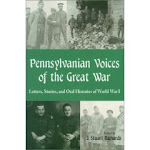
iF YOU ARE IN THE AREA SEPTEMBER, 3, 4, 5, AND 6 CHECK OUT THIS EVENT IT WILL BE FUN.
Sparks Around the Campfire
The Story of Schuylkill County in the Civil War
Patriotic Rally
Wednesday, September 3, 2008—7:00 p.m.—Sovereign Majestic Theater
Admission—5 cents. Call 628-2833
Join us at the Sovereign Majestic Theater and relive the sights and sounds of a Patriotic Rally during the Civil War Era. Speeches, music, lectures and more.
Civil War Show and Tell
Thursday, September 4, 2008—5:30 p.m.—Historical Society of Schuylkill County
Admission—Donation Accepted. Call 622-7540
Bring your Civil War artifacts for appraisal or to discuss with other Civil War aficionados. The Civil War Exhibit in the Historical Society will be open for tours.
Marty Hupka will be in attendance with several Civil War Era photographs…he is offering a reward of $50.00 for the positive identification of specific people in the photos.
Meet General Meade, Victor of the Battle of Gettysburg
Anthony Waskie, Philadelphia - Professor of Languages & Member of the Civil War & Emancipation Studies Forum, Temple University
Thursday, September 4, 2008—7:00 p.m.—Historical Society of Schuylkill County
Admission—Donation Accepted. Call 622-7540
Using Meade's own words and extensive background research, Anthony Waskie, speaking as General Meade, will recount the General's career and services to the nation. From his work as an engineer and lighthouse builder, to combat in the Seminole and Mexican Wars, to his assuming command of the Union Army on the eve of the Battle of Gettysburg (where he handed Lee his first defeat), Meade was integral to the survival of the Union. Not only successful in war, Meade also designed Philadelphia's Fairmount Park, founded two schools for orphans of Civil War veterans and helped integrate surviving veterans back into peacetime pursuits.
Participants are encouraged to ask “General Meade” questions about his life and work.
Torchlight Vignettes
Friday, September 5, 2008—Schuylkill County Council for the Arts
6:00 - 7:30 p.m. – Mingle and Dine
8:00 p.m. – Till? – Torchlight Vignettes
Admission—$8.00. Call 622-2788
Enjoy a Civil War Era evening featuring strolling musicians, choral groups, living historians, food vendors followed by Torchlight Vignettes where various Civil War scenes are brought to life by living historians.
Grave Tours
Saturday, September 6, 2008—10:00 a.m.-12:00 noon.—Meet at Presbyterian Cemetery (Howard Avenue and 12th Street)
Admission—Free to all
Tour Presbyterian Cemetery led by John Hoptak, Author and US Park Ranger and Tom Shay, Local Historian, to see the final resting place and hear the stories of the lives of Civil War Notables, including Brigadier General James Nagle, Colonel Daniel Nagle, Medal of Honor Winner Colonel Jacob Frick.
Lectures
Saturday, September 6, 2008—12:00p.m.-1:00p.m.
Admission – Free, Donations Accepted
Barry Berkey - Historian, Weapons Expert - “Weapons of the Civil War”—Historical Society of Schuylkill County
Jim Corrigan - Author, Historian—”Schuylkill County Coal Miners and the Battle of the Crater”—Sovereign Majestic Theater
Danielle Richards - Historian, Educator - “Arrest the Women at Once and Dispose of Them” - The War & Schuylkill County Irish Women—Historical Society of Schuylkill County.
Saturday, September 6, 2008—2:00p.m.-3:00p.m.
Admission – Free, Donations Accepted
Stu Richards - Author, Historian. - “From the Prison Pen, Schuylkill County Soldiers and Civilians in Rebel Prisons.”— Historical Society of Schuylkill County
Mark Major – Historian, Author - “Schuylkill County in the Civil War: A Collection of Highlights, Unique Stories and Random Insights—Sovereign Majestic Theater.
Saturday, September 6, 2008—3:00p.m.-4:00p.m.
Admission – Free, Donations Accepted
John Hoptak - Author, Historian, Park Ranger Antietam battlefield. “Schuylkill County's Veteran War Horse: The Life and Forgotten Service of Brigadier General Nagle.”—Historical Society of Schuylkill County
Tom Shay - Historian, Antietam Battlefield guide. - “The men and the Units from Schuylkill County and the battles they fought in”—Sovereign Majestic Theater.
Book Signing
Saturday, September 6, 2008—12:00p.m.-4:00p.m.—Historical Society of Schuylkill County
Admission – Free, Donations Accepted. Call 622-7540
The Research Room of the Historical Society will be open for meet and greet and book signings by authors John Hoptak, Jim Corrigan, and Stu Richards.
Premiere of Movie “The Color Bearers”
Saturday, September 6, 2008—7:00 p.m.—Sovereign Majestic Theater
Admission—$5.00. Call 628-2833
The Color Bearers is an enlightening, entertaining look at American Patriotism’s evolution as embodied by its iconic symbol the American Flag.
While the film explores the familiar themes in that great American Story – Francis Scott Key and the flag planted atop Iwo Jima – it also explores lesser known but no less deserving subjects such as Mary Pickersgill, maker of the Star Spangled Banner that flew over Ft McHenry and inspired the Star Spangled Banner – Sgt William H Carney, the first African American to be awarded the Medal of Honor for his gallant bravery and defense of the flag with the 54th Massachusetts at Fort Wagner, and who later inspired the film “Glory”. Alongside these heroes of America’s past, the program features modern day patriots – common Americans doing uncommon things to honor their flag and their country – such as NY Artist Scott LoBaido who traveled the United States painting one large American Flag mural on one rooftop in each of the fifty states. This he did with no corporate sponsorship, and as he put it –”I’ll get back to New York with about a hundred bucks left to my life.”
We meet a descendent of Sgt William Carney – and also the descendents of two other Civil War Flag-bearing heroes – and hear how the bravery of their gallant ancestors has affected and helped shape their lives today.









